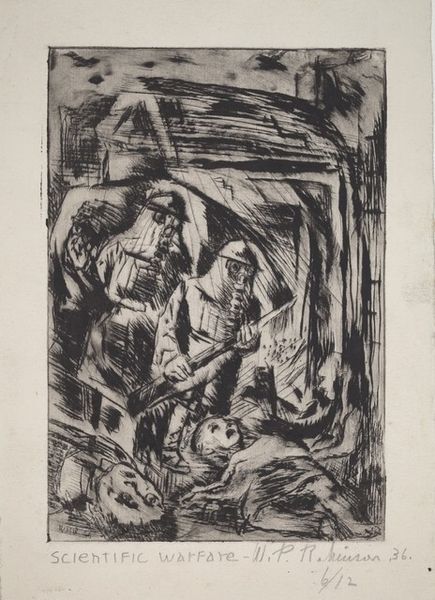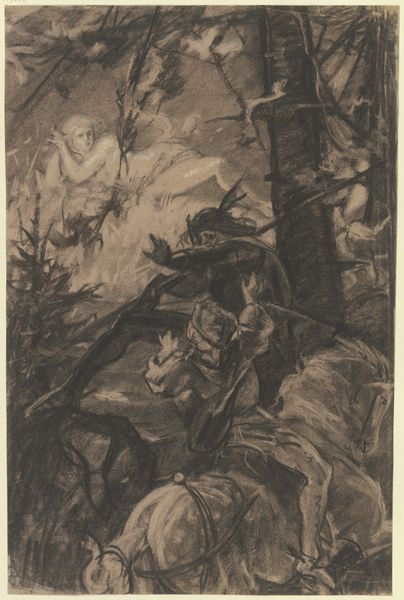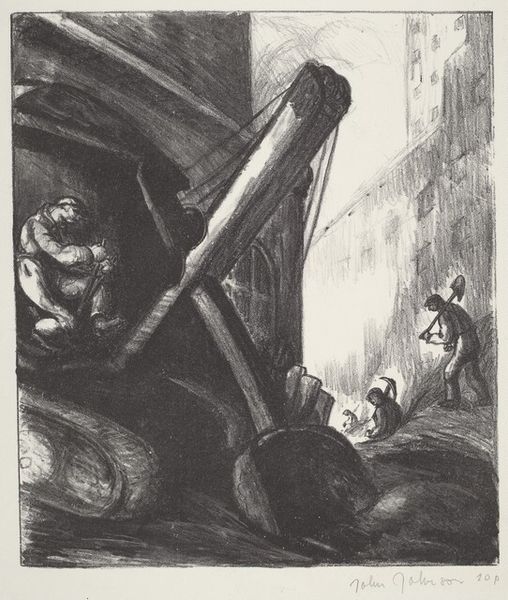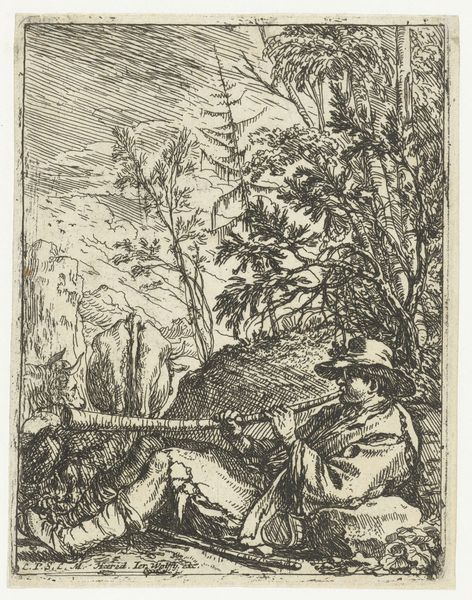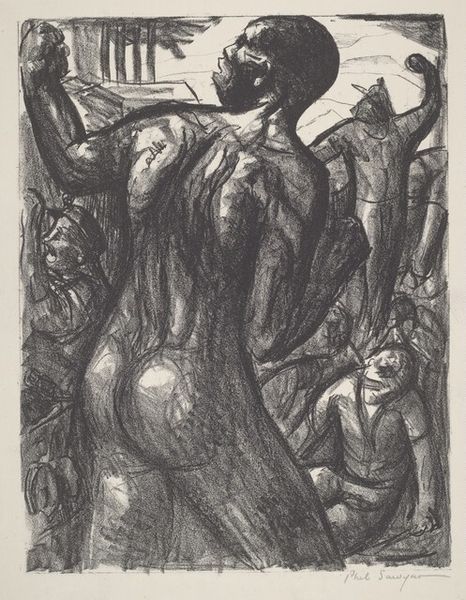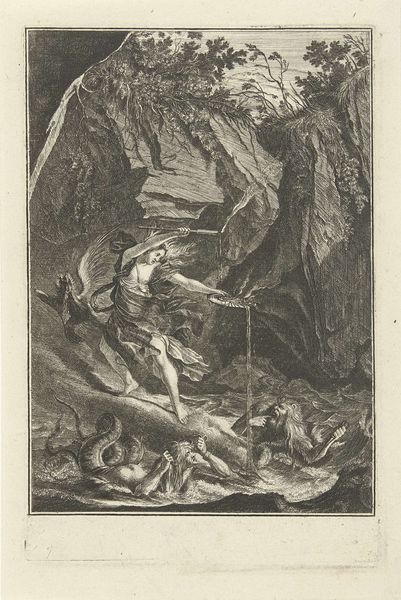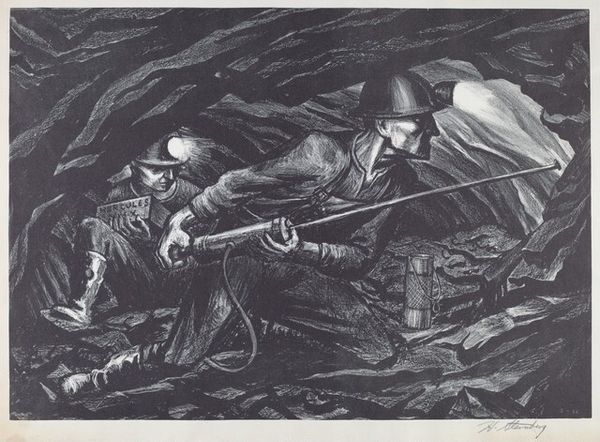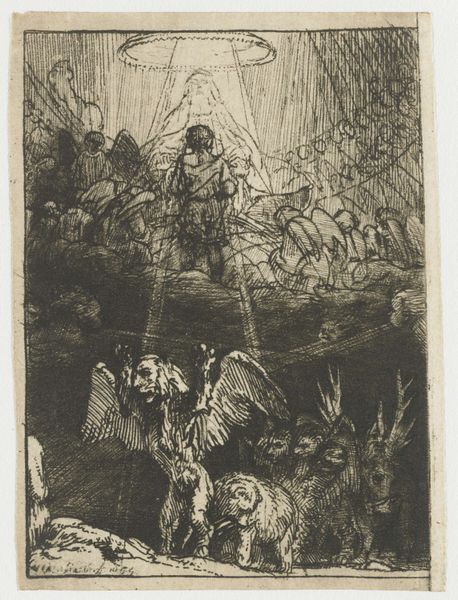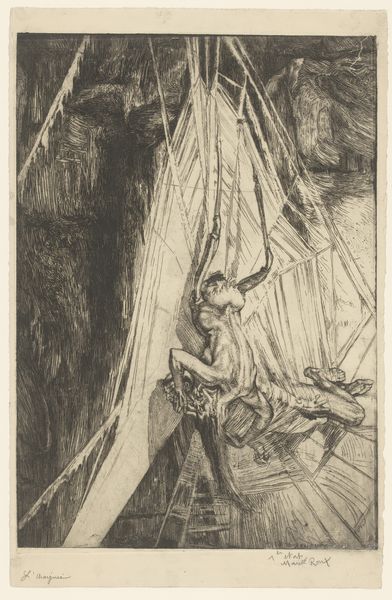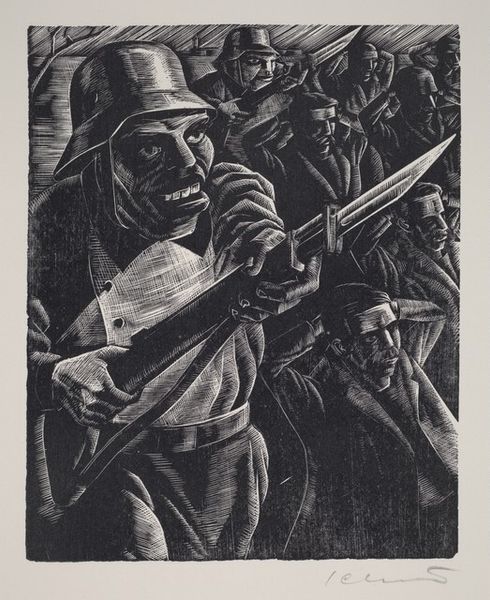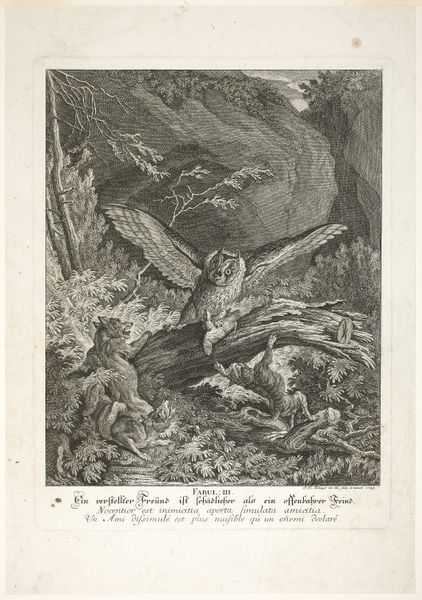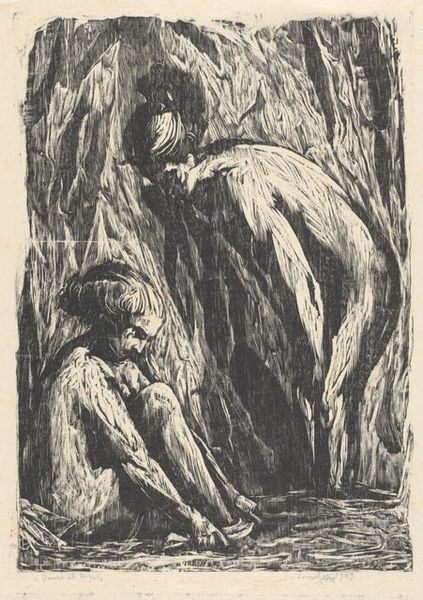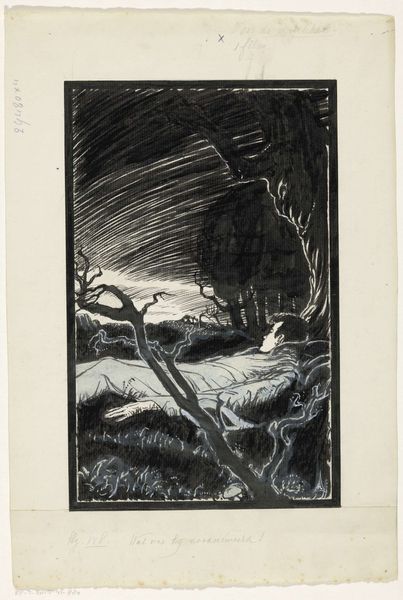
drawing, print, charcoal
#
pencil drawn
#
drawing
# print
#
charcoal drawing
#
figuration
#
pencil drawing
#
genre-painting
#
charcoal
#
modernism
#
realism
Dimensions: image: 352 x 269 mm sheet: 454 x 330 mm
Copyright: National Gallery of Art: CC0 1.0
Editor: This is Irwin D. Hoffman’s “Drilling in Ore” from 1936, a charcoal and pencil drawing. I’m struck by the darkness and claustrophobia of the scene, with those men seemingly trapped by their labor. How do you interpret this work, especially its intense, almost desperate feeling? Curator: The desperate feeling is key, I think. Consider how Hoffman uses light – or lack thereof – to depict this underground world. It reflects more than just the physical conditions. Think of light and darkness as potent symbols: in Western culture, light signifies hope, knowledge, even salvation. Editor: So, the lack of light signifies the opposite, a loss of hope, perhaps? Curator: Precisely. And notice how the drilling machine, a symbol of progress and industry, looms so large it dwarfs the miners. Is it a tool of liberation or oppression in this depiction? Editor: I hadn’t considered that duality. It's almost as if the machine has become a cage itself. Could it be Hoffman’s comment on the human cost of industrial progress during the 1930s? Curator: Exactly! The symbolism of the cave is age old and points towards rebirth as well as death. Here, we witness their daily symbolic descent into hell, seeking to extract materials in the womb of the earth. How might their grueling physical labor then be an echo of sacrifice or the struggle for survival? Editor: Wow, that really changes how I see this piece. It is far more than a picture of miners, it’s loaded with symbolic meaning. Curator: Indeed, a dark yet evocative mirror reflecting the trials, endurance, and humanity found even in the deepest, darkest places. It serves as a powerful reminder of our cultural memory of such struggles.
Comments
No comments
Be the first to comment and join the conversation on the ultimate creative platform.
